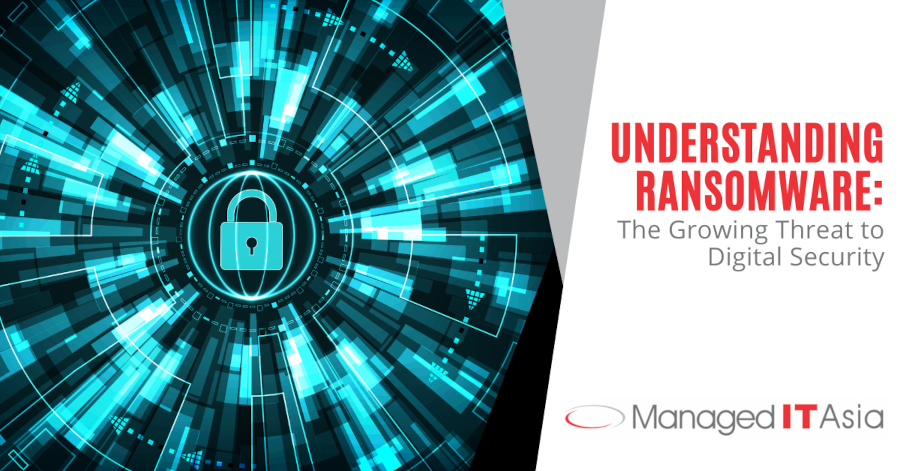In today’s interconnected digital landscape, one of the most pervasive and damaging threats facing businesses and individuals alike is ransomware. Ransomware attacks have become increasingly sophisticated, targeting everything from small businesses to large corporations, governmental institutions, and even individuals. Understanding the nature of ransomware, its mechanisms of action, and effective strategies for prevention and mitigation is crucial in safeguarding against this evolving threat.
What is Ransomware?
Ransomware is a type of malicious software designed to block access to a computer system or data until a sum of money, or ransom, is paid. This form of cyberattack typically encrypts files on the victim’s device, rendering them inaccessible, and then demands payment in exchange for a decryption key. The ransom demand often comes with a threat of permanent data loss or further damage if the payment is not made within a specified time frame.
Types of Ransomware
There are several variants of ransomware, each with its own unique characteristics and methods of operation. These include:
- Encrypting Ransomware: This type of ransomware encrypts files on the victim’s system, making them unusable until a ransom is paid.
- Locker Ransomware: Locker ransomware locks the victim out of their device or system entirely, preventing access to files, applications, or the entire operating system.
- Scareware: Scareware doesn’t encrypt or lock files but uses scare tactics to coerce victims into paying a ransom by displaying intimidating messages or fake alerts.
How Ransomware Works
Ransomware typically infiltrates a system through phishing emails, malicious attachments, compromised websites, or exploiting vulnerabilities in software or operating systems. Once inside a system, it encrypts files or locks the system, effectively denying access to critical data or functions. The attackers then demand payment, often in cryptocurrencies like Bitcoin, which provide a degree of anonymity.
Evolution of Ransomware Tactics
Over time, ransomware tactics have evolved to become more sophisticated and targeted. Modern ransomware attacks may involve advanced encryption algorithms, evasion techniques to avoid detection by security software, and even the exfiltration of sensitive data before encryption to increase leverage over victims.
The Impact of Ransomware
Ransomware attacks can have devastating consequences for individuals, businesses, and organizations of all sizes. Beyond the immediate financial costs of paying the ransom (which is not recommended), there are several other significant impacts to consider:
- Disruption of Operations: Ransomware can disrupt normal business operations, leading to downtime, loss of productivity, and damage to reputation.
- Data Loss: In some cases, victims may lose access to critical data permanently if backups are not available or if the decryption process fails.
- Regulatory Compliance Issues: Organisations may face legal and regulatory consequences if sensitive data is compromised as a result of a ransomware attack, especially in industries with strict data protection regulations.
Preventing and Mitigating Ransomware Attacks
Prevention is key when it comes to ransomware attacks. While it may not be possible to guarantee 100% protection, implementing a layered approach to cybersecurity can significantly reduce the risk of falling victim to ransomware:
Employee Training and Awareness
Educating employees about the risks of phishing emails, suspicious links, and downloading attachments from unknown sources can help prevent ransomware infections. Regular training sessions and simulated phishing exercises can reinforce security awareness and best practices.
Patch Management and Software Updates
Keeping operating systems, software, and security solutions up to date with the latest patches and updates is essential for closing known vulnerabilities that ransomware attackers often exploit.
Data Backup and Recovery
Maintaining regular backups of critical data stored both on-premises and in the cloud can mitigate the impact of ransomware attacks. In the event of an infection, having up-to-date backups ensures that data can be restored without paying the ransom.
Network Segmentation and Access Controls
Segmenting networks and restricting access to sensitive data can limit the spread of ransomware within an organization’s infrastructure. Implementing strong access controls and least privilege principles ensures that only authorized users have access to critical systems and information.
Security Solutions
Deploying robust cybersecurity solutions such as antivirus software, firewalls, intrusion detection systems, and email filtering can help detect and block ransomware threats before they can cause harm.
Get Ransomware Protection Today
Ransomware poses a significant and evolving threat to digital security, with potentially devastating consequences for individuals and organisations. Understanding the nature of ransomware, how it operates, and effective strategies for prevention and mitigation is essential for safeguarding against this pervasive threat. At Managed IT Asia – We Manage Small Business IT, we specialise in providing comprehensive cybersecurity solutions tailored to the unique needs of small businesses. From employee training and awareness programs to advanced security technologies, we help our clients defend against ransomware and other cyber threats. Don’t wait until it’s too late – contact us today to learn more about how we can help protect your business from ransomware attacks.
MANAGED IT ASIA, we are an IT Support, IT Solutioning and Managed IT Service Provider specializing in serving Small Businesses across Asia. Call us at +65 6748 8776 and let us manage your Small Business IT today!
